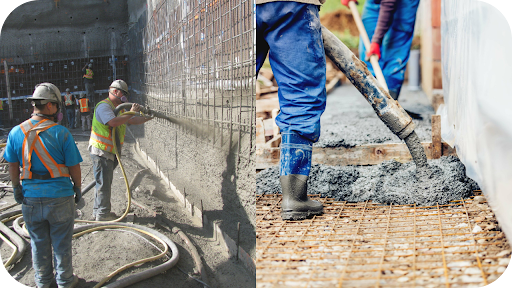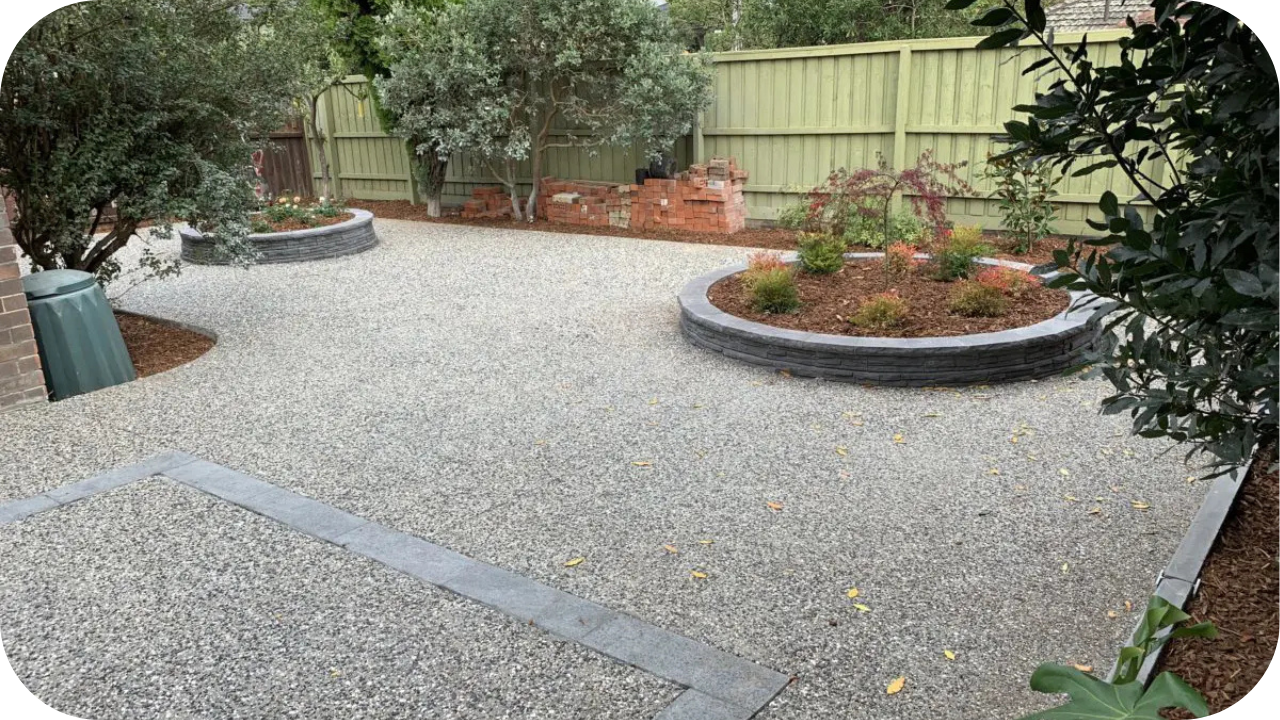

.png)
Every build begins with a strong foundation, and choosing the right method is crucial for long-term stability. Two popular foundation methods are piling and bored piers, each offering unique benefits depending on soil conditions, structural demands, and budget.
Piling is often preferred for weak ground and heavy loads, while bored piers perform well in stable soils for residential or mid-sized projects.
In this guide, we compare these construction foundations to help you decide which option best suits your build.
Piling is a foundation method used when the ground near the surface is too weak to support a structure. Long, slender columns made from concrete, steel, or timber are driven deep into the ground until they reach stronger soil layers or bedrock.
This transfers the load of the building to more stable ground, ensuring safety and durability. Piling is commonly used in high-rise buildings, bridges, and large commercial projects where heavy loads demand extra support.
It is also ideal for sites with poor soil conditions, waterlogged areas, or unstable terrain. By providing strong, deep anchorage, piling ensures that even the tallest structures remain stable over time.
Bored piers, also known as drilled shafts, are vertical concrete columns cast directly into drilled holes in the ground. The process involves excavating a cylindrical hole, inserting steel reinforcement, and filling it with concrete to form a strong support.
Unlike piling, bored piers do not rely on being driven into the ground but instead use their depth and size to carry loads. They are best suited for stable, cohesive soils and are widely used in residential homes, low-rise buildings, and smaller commercial projects.
Bored piers are cost-effective, create minimal vibration, and are reliable when designed correctly, making them a preferred choice for many standard construction foundations.

While both piling and bored piers create stable foundations, they perform differently depending on soil conditions, load requirements, and project size. Here’s a breakdown of the key differences to help you choose the most reliable method for your build:
The choice between piling and bored piers often depends on soil conditions. Piles are ideal for weak, waterlogged, or sandy soils where surface ground cannot support a structure. They reach deeper, stable layers, ensuring strength.
Bored piers, however, are better suited to firm, cohesive soils where drilled shafts can maintain stability without collapsing. This makes them a reliable option in areas with strong surface ground. Choosing the right foundation method starts with proper soil testing and understanding ground conditions.
When it comes to handling heavy loads, piling foundations outperform bored piers. Driven piles can transfer the weight of high-rise buildings, bridges, and industrial projects to deeper layers, making them ideal for large-scale developments. Bored piers have good load-bearing strength but are best suited to medium-sized or residential structures.
Their capacity depends heavily on soil stability and pier depth. For projects demanding extreme load resistance, piling is often the safer and more durable option, while bored piers remain practical for lighter builds.
The installation methods for these foundation systems differ significantly. Piling involves driving pre-formed piles into the ground using specialised equipment, a fast process but one that creates vibration and noise. This can impact nearby buildings and residents.
Bored piers, in contrast, are drilled on-site, filled with reinforcement, and concreted in place. This process is quieter and causes minimal disturbance, but it can be slower, especially on larger projects. The choice between piling and bored piers may depend on project location and environmental impact.
Budget plays an important role in foundation selection. Piling generally costs more due to specialised equipment, deeper excavation, and heavy-duty materials, but it offers unmatched stability in weak soils. Bored piers are often more economical for small to mid-scale projects, requiring less equipment and labour.
However, poor soil conditions can drive up costs if extra reinforcement or stabilisation measures are needed. In general, piling is a long-term investment for complex or heavy builds, while bored piers provide a cost-effective solution for stable, residential, and smaller commercial foundations.

When projects demand strength in challenging soil conditions, piling foundations rise to the occasion. Here are the main reasons why piling is a dependable choice for large and complex builds:
For residential or mid-sized developments, sometimes a simpler foundation method is all that’s needed. Here’s why bored piers continue to be a reliable and cost-effective option:

Every site has unique ground conditions and structural demands, making the right foundation choice critical. Let’s look at when piling is the stronger option and when bored piers offer the best value for your build:
Piling is the go-to option for projects built on weak or unstable soils where surface ground cannot support heavy loads. It’s especially suited for high-rise buildings, bridges, marine structures, and large industrial developments where deep anchorage is essential.
Piles are also ideal in waterlogged areas or sites with shifting ground, as they transfer weight to more stable layers below. If your project involves extreme loads or challenging soil conditions, piling provides the durability and strength needed for long-term stability.
Bored piers work best on sites with firm, cohesive soils that can maintain stability when drilled. They are widely used in residential homes, small to mid-rise buildings, and lighter commercial projects.
Bored piers are also the preferred choice when nearby structures may be sensitive to vibration, as their installation process is quieter and less disruptive. They deliver a reliable and cost-effective solution for projects that don’t require the extreme depth and load-bearing capacity of piling.
For stable ground conditions and moderate structures, bored piers are often the smarter foundation choice.
The foundation you choose will determine the strength and longevity of your build. With so many factors to consider, expert advice makes all the difference. Here’s how Urban Pour ensures every project starts on solid ground:
Choosing between piling and bored piers comes down to understanding soil conditions, structural load requirements, and budget.
Each method offers reliable stability when designed and executed correctly, but selecting the most suitable option is critical to ensuring long-term performance. With the right foundation in place, projects gain the strength and resilience they need to stand the test of time.
Urban Pour provides the expertise to guide you through this decision with confidence. Our team assesses site conditions, recommends the best solution, and delivers workmanship that meets the highest standards of safety and durability.
Whether you are building for residential, commercial, or infrastructure needs, you can rely on us to provide a foundation that supports your project from the ground up.
Contact us today to discuss your requirements and take the first step toward building on strength and certainty.

Shotcrete and poured concrete each offer unique advantages. Choosing between them depends on project size, site access, and structural needs.
See more
Exposed aggregate concrete driveways in Melbourne combine strength with striking design, offering a stylish, low-maintenance finish that lasts.
See more